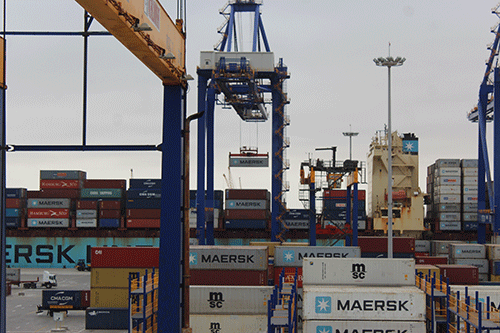The outbreak of the pandemic and the closure of many ports in the region resulted in many container ships being rerouted to the Port of Walvis Bay. This, in turn, provided the Namibia Ports Authority (NamPort) with an opportunity to showcase its world-class productivity and efficiency as one of the best ports in Africa.
However, logistics analysts now predict that global supply lines will require at least nine months to rectify current delays, which is pushing up the cost of goods around the world. This is as global shipping companies continue to rake in huge profits as a result of escalating costs to transport goods. This is because charter rates per 40-foot container remain close to all-time highs across major global shipping routes, trading at around US$16 000 on the China to US West Coast route and nearly US$13 000 from China to Europe, according to the Freightos shipping index.
Supply chain specialists also warned that they expect conditions to deteriorate, reversing the recent improvement in the container ship backlogs, and complicating the fight against inflation.
During an exclusive interview with New Era last week, NamPort spokesperson Taná Pesat explained that a global container shortage actually exacerbated the costly supply chain delays in every part of the world.
Pesat noted that initial supply line constraints occurred on the China to United States of America (USA) route as a result of the pandemic. “With the outbreak of the pandemic, many Americans were working from home and were buying more home office furniture and related items. This meant that more containers were being routed to the US,” she said.
She added that this factor, combined with port shutdowns due to Covid-19 outbreaks, meant that goods were being produced but could not be transported due to the massive congestion on all shipping routes.
Pesat continued that the current increasing number of Covid cases in China and Europe is definitely not a good sign for global shipping lines. This has dashed hopes of a return this year to reliably smooth freight shipments, and still adds considerable pressure on consumer prices.
Coupled with the war in Ukraine, this is affecting Namibian imports of everything from sulphur for the mining industry to cooking oil for household consumption.
Fallouts from the war in Ukraine and a coronavirus outbreak in China’s manufacturing heartland are putting fresh kinks in global supply chains,
Financial sanctions and the closure of Russian airspace are also forcing cargo planes to fly longer, making transport costlier from Asia to Europe, while triple-digit oil prices are inflating fuel bills for both ocean carriers and truckers.
Last week, Maersk, the world’s second-largest cargo carrier, warned of “unpredictable operational impacts” from the Russia-Ukraine war, while in southern China, waiting times grew for ships trying to dock at the ports.
“What people expected to be a recovery year is going to be another year of crazy hiccups in supply chains,” said Johannes Schlingmeier, chief executive of xChange, a shipping container leasing company in Germany.
Meanwhile, China’s main ports remain open, and vessels are continuing to dock. But congestion is building up, and some container ships are re-routing to avoid expected delays, according to ship owners, analysts and supply chain managers.
“This implies that it will become difficult to get cargo to and from the ports. Hence, whether the terminals are open or not becomes a moot point. It will have a disruptive impact on the supply chain, in turn prolonging the current supply chain crisis.”


